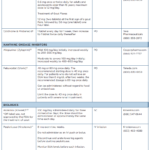Aspiration of joints, especially small ones, is difficult. “Many physicians are not comfortable performing a joint fluid aspiration to make a definitive diagnosis,” says Dr. Neogi. It’s also difficult to examine samples under polarizing microscopy. Although positive MSU crystal results are helpful in assessing gout, they’re not a feasible standard for universal identification of study subjects because many patients may be recruited from non-rheumatology settings. The new criteria were designed to be flexible enough to be used in gout assessment in patients with any MSU status.
Rheumatology clinical researchers can use these new criteria to standardize how they identify gout patients to enroll in clinical studies, such as randomized trials or observational studies, says Dr. Neogi. These trials and studies critically depend on appropriate identification of individuals with gout.
“These classification criteria are not intended to identify all different, uncommon presentations of gout. Instead, they are intended to identify, in a standardized fashion, a relatively homogenous group of individuals who have gout, with features that represent the majority of people with gout,” says Dr. Neogi.
“No set of classification criteria can fully capture the entire spectrum of a disease, which is also dependent upon one’s own local geography and other factors. The overall benefit to patients with gout is that these criteria will facilitate further studies of gout, including for treatments,” she says.
Although rheumatology clinicians and others who treat gout patients may find these new criteria educational, they are designed only for case identification for clinical research studies, not for use by rheumatologists in clinical practice for diagnosing gout, says Dr. Taylor. “No classification criteria are able to replace careful and skilled diagnostic processes in ordinary clinical care.”
The investigators hope the ACR/EULAR classification criteria will become the new standard for clinical studies of gout and make it easier to conduct more standardized studies on this widespread disease, says Dr. Neogi.
When the understanding of any disease changes or when new technology, such as a new imaging modality, emerges to change the way physicians diagnose disease, new and revised criteria are required, says Dr. Taylor.
“Collaboration between rheumatology organizations is important because clinical research is needed to study the same disease no matter where the study is conducted. We need to know that gout studies in Taiwan are studying the same kind of patients as gout studies in Boston,” he says. “Only international cooperation can achieve this kind of worldwide consensus.”


